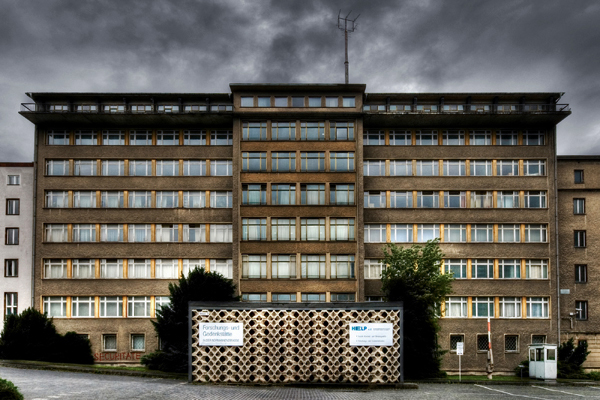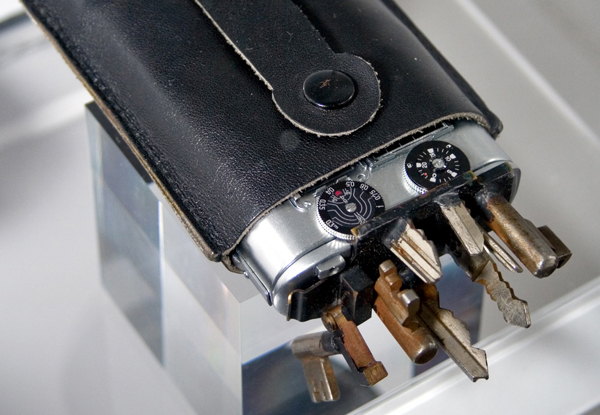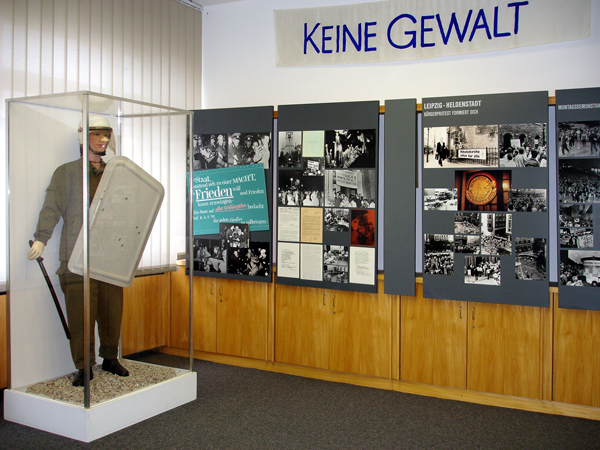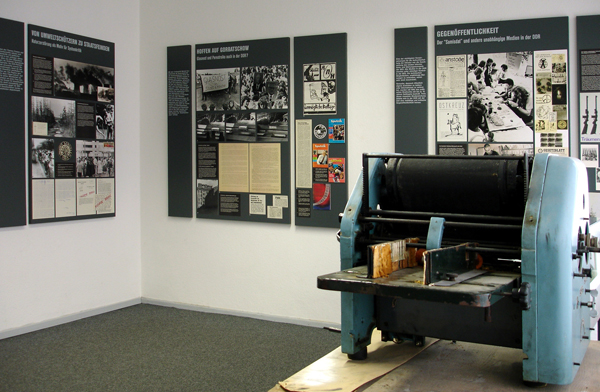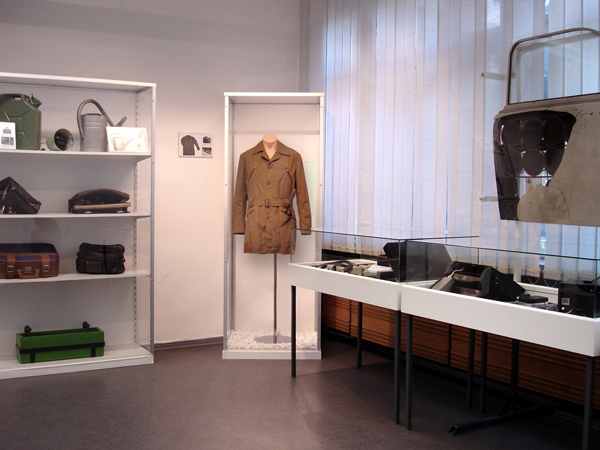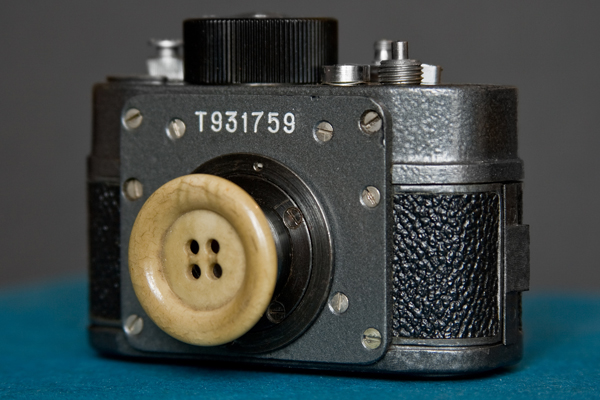STASI UMASKED
If like me you grew up reading Le Carré and Len Deighton then, like me, you should check out the former HQ of East Germany’s Ministry for State Security, better known as the Stasi. It’s at 103 Ruschestrasse, a 15-minute U-Bahn ride from Alexanderplatz (get off at Magdalenenstrasse on line U5). It’s now a museum―left just as it was when the Wall came down. A suite of heavily panelled rooms―all sturdy Sixties furniture and Bakelite phones―was where the Stasis’s last leader Erich Mielke and his cronies controlled hundreds of thousands of secret police and informants who in turn controlled the population of the GDR through fear and disappearance. It’s completely atmospheric; and very creepy. Also on view every type of covert spy camera hidden in briefcases, belts, ties, shoes, pens, cigarette packs and an AK-47 concealed in a suitcase. It looks quaintly amateurish now but these guys were the ‘shield and sword of the party’ and they killed non-believers.www.stasimuseum.de
WATCH WHERE YOU TREAD
History is never far away in Berlin, one of my favourite cities. I was back there this year working on stories for European editions of Reader’s Digest when I came across a line of slabs set into the ground on Bernauer Strasse. They mark the path of the Berlin Wall which came down 9 November, 25 years ago. One of the slabs is inscribed: Fluchttunnel Tunnel 57. I found out that this was the exact sport where on 3 and 4 October 1964 57 people crawled underground to freedom from Communist East Berlin emerging in the West in what was then the basement of 97 Bernauer Strasse, an abandoned bakery. They owed their freedom to young ideological students who dug 12 metres deep from west to east for 145 metres, surfacing in an outhouse in the yard of 55 Strelitzer Strasse in what was heavily militarised East Berlin. It was the longest and deepest of all Berlin’s escape tunnels. One of the tunnelers Joachim Neumann was reunited with and married his girlfriend Christa Neumann. He went on to work on 60 tunnel projects as a civil engineer, including the Channel Tunnel. There’s plenty more at Berlin Wall Memorialwww.berliner-mauer-gedenkstaette.de
I also came across this vintage shot of my first visit to Berlin when the Wall still snaked for 100 menacing miles through the city. Crossing over to the East, an East German guard at Checkpoint Charlie studied my passport and said: ‘journalism is not allowed in East Berlin.’
In the Footsteps of The Third Man
In Vienna working on a story last week took time out to go on the wonderful The Third Man walking tour. Pictured below is guide Barbara Timmerman standing by the kiosk which leads down to the famous sewer sequence in the movie and is the first stop on this two-and-a-half hour walk through the city and the locations used in the film. Barbara does the tour twice a week and she is excellent at bringing the world of Harry Lime to life. I expected to bump into him around every corner. Learning how scenes were really done does nothing to diminish the film; in fact it enhances it. Barbara’s mother Dr Brigitte Timmerman founded Vienna Walks & Talks (www.viennawalks.com). Barbara’s sister Kerstin and brother Christopher also lead walking tours in this most atmospheric of cities. Carol Reed’s landmark movie still has such resonance in the city where it was filmed in 1948 that it is shown several times a week at the Burg Kino cinema at 19 Opernring near the Opera House (U1, U2, U4 Karlsplatz).
The Fixer
In these days of built-in obsolescence and mountains of electronic waste Sepp Eisenriegler, whom I interviewed in Vienna recently for a profile, is a special man turning the tide. In 1998 Sepp created the Repair and Service Centre (R.U.S.Z), a warehouse on a small industrial estate in Austria’s capital where in a warren of rooms ceiling-high stacks of cookers, fridges, TVs, computers, radios, food processors, mobile phones, toasters and other appliances that most of us take to the amenity tip as soon as the warranty runs out and they begin to go wrong are being brought back to life by a team of highly skilled electrical and mechanical engineers. Either people bring in their appliances for repair at reasonable rates or R.U.S.Z saves stuff from the dump, fixes it up good as new and sells it on.
Sepp is one of a growing number of social entrepreneurs worldwide so R.U.S.Z also has a social purpose. He has so far given 300 long-term unemployed, the marginalised, serving and ex-prisoners and the disabled the opportunity to learn repair skills, the chance to earn a living wage and regain the confidence to go back into regular employment. R.U.S.Z is an object lesson in how to make things last, giving consumers better value for money. “At R.U.S.Z we don’t say second-hand,” Sepp explains, “we say second-life.”
“We have prevented 10,000 tons of waste from electrical and electronic equipment (better known as WEEE) from ending up prematurely in dumps.” On the debit side every EU citizen still produces around 16kg of WEEE a year.
A feature on Sepp and R.U.S.Z will appear on this website soon and in print in 16 languages right across Europe (R.U.S.Z imitators please!) Meanwhile visit R.U.S.Z at www.rusz.at
Hostage to Comfort
Early October to the Nobis Hotel in Stockholm. “One of the City’s hippest”, it is in Norrmalmstorg Square which is the most exclusive square on the Swedish version of Monopoly. But it wasn’t that which drew me; although comfort on a 20 per cent discount and clean Scandinavian design were attractive. It was the fact that Nobis has a significant place in criminal history. On 23 August 1973 this Nineteenth Century elegant six-storey was a branch of Kreditbanken when career criminal Jan-Erik Olsson forced his way in and took four workers hostage in the vault. Police snipers took up position on adjoining roofs as negotiators tried to coax Olsson out. Six days later when the stand-off ended it became obvious that the victims had formed a positive relationship with their captor despite fearing for their lives. This feeling of hostage-captor empathy was soon given a name by criminologists and psychiatrists: Stockholm Syndrome. I checked in and went in search of clues, hoping they had not been airbrushed by muted colours and modernist furnishings. I found them on the marble floor of the fitness centre: circular marks show where police drilled into the bank vaults.

